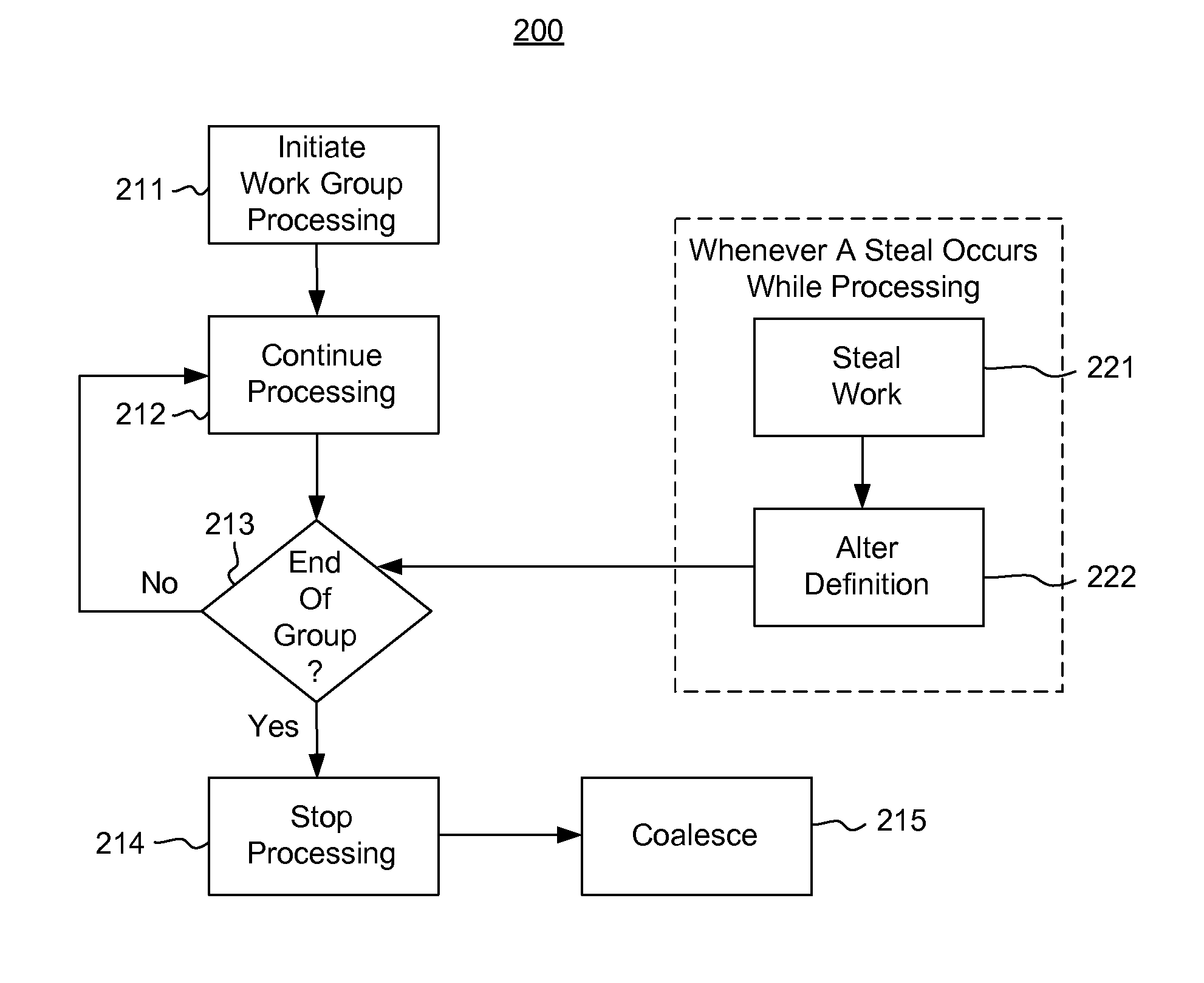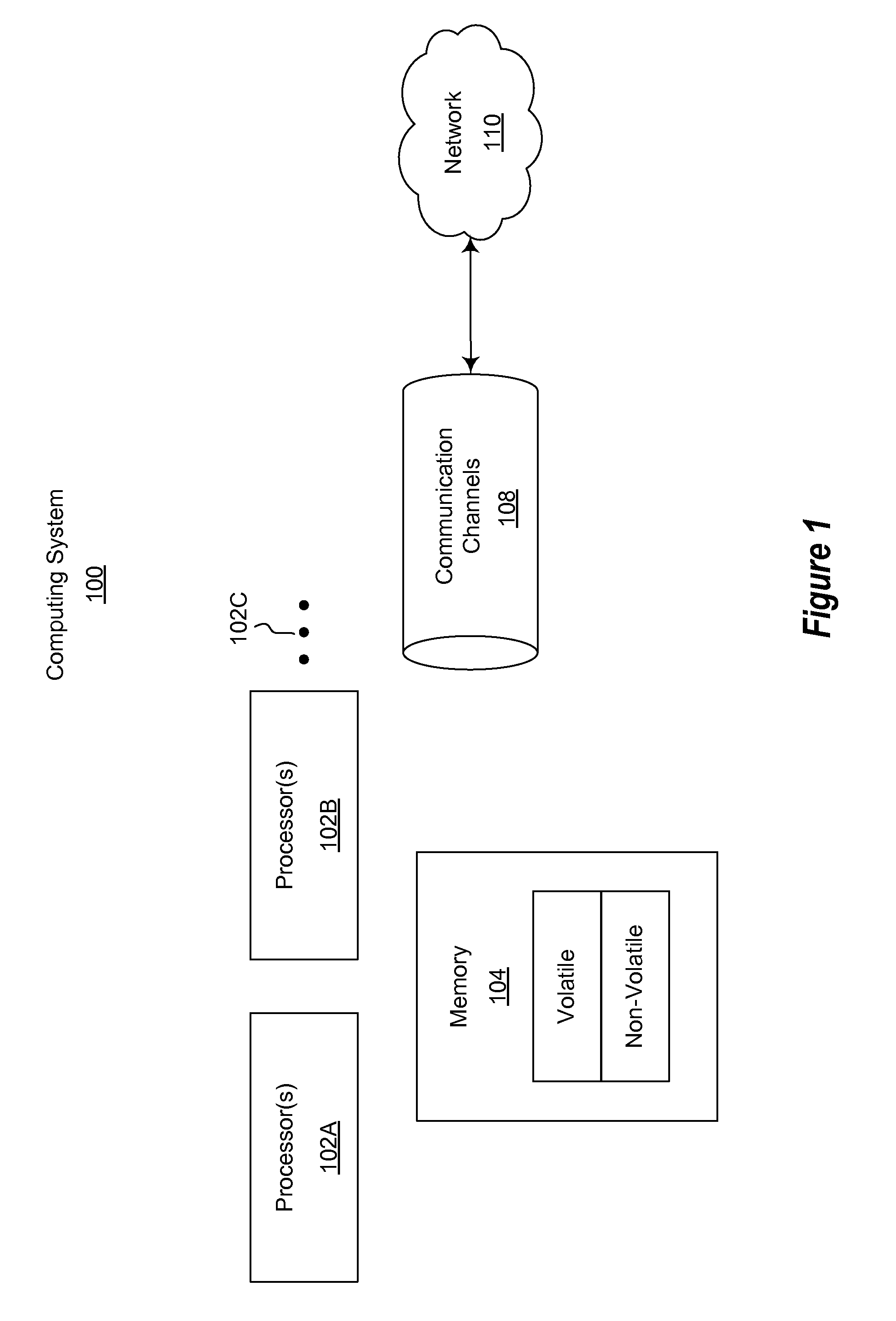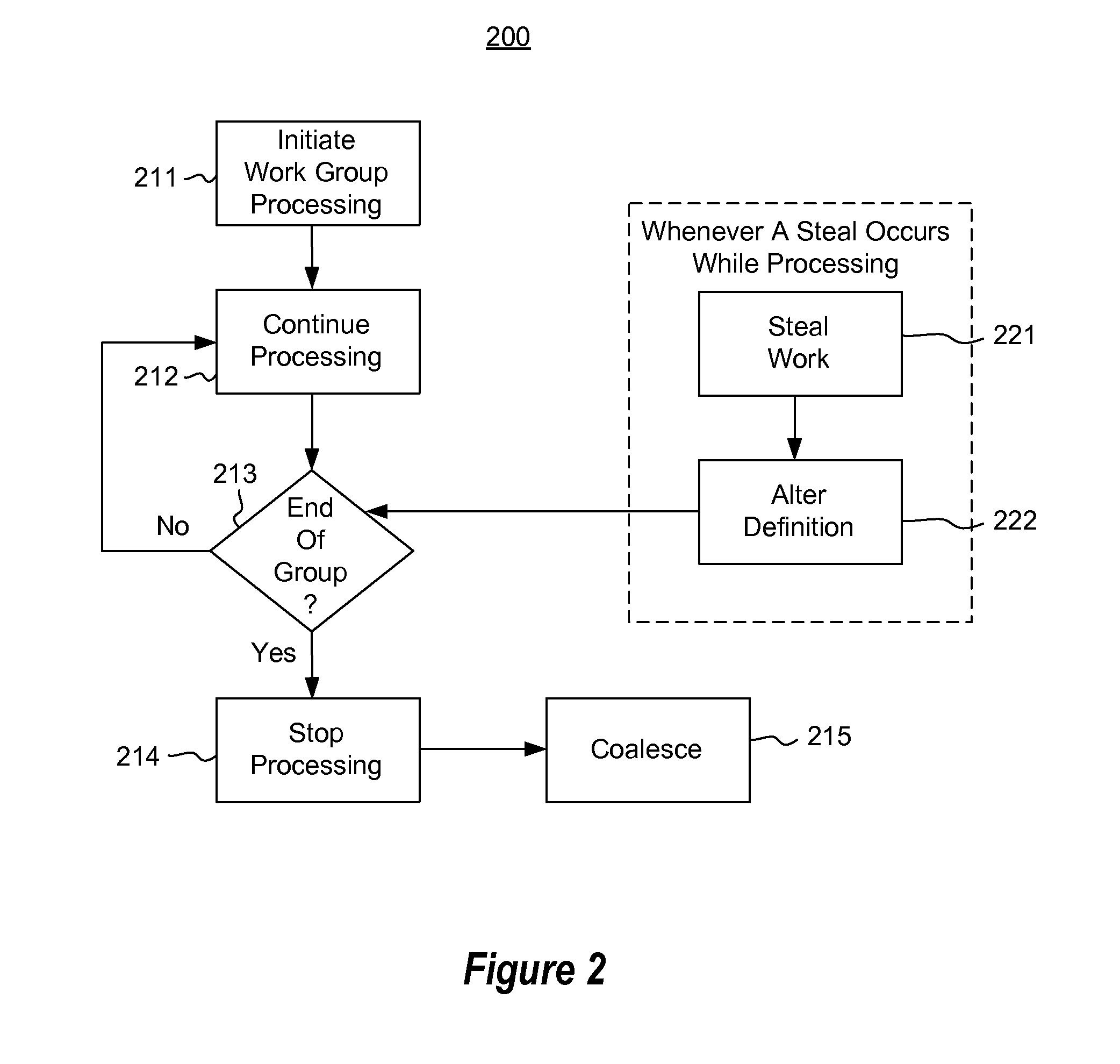Iterative data parallel opportunistic work stealing scheduler
- Summary
- Abstract
- Description
- Claims
- Application Information
AI Technical Summary
Benefits of technology
Problems solved by technology
Method used
Image
Examples
Embodiment Construction
[0014]In accordance with embodiments described herein, the scheduling of work units is described in a manner that allows worker processes to opportunistically take work (called “steal work” in the art) from other worker processes as the stealing worker becomes available to do so. First, some introductory discussion regarding computing systems will be described with respect to FIG. 1. Then, various embodiments of the scheduling will be described with reference to FIGS. 2 through 6.
[0015]First, introductory discussion regarding computing systems is described with respect to FIG. 1. Computing systems are now increasingly taking a wide variety of forms. Computing systems may, for example, be handheld devices, appliances, laptop computers, desktop computers, mainframes, distributed computing systems, or even devices that have not conventionally considered a computing system. In this description and in the claims, the term “computing system” is defined broadly as including any device or s...
PUM
 Login to View More
Login to View More Abstract
Description
Claims
Application Information
 Login to View More
Login to View More - R&D
- Intellectual Property
- Life Sciences
- Materials
- Tech Scout
- Unparalleled Data Quality
- Higher Quality Content
- 60% Fewer Hallucinations
Browse by: Latest US Patents, China's latest patents, Technical Efficacy Thesaurus, Application Domain, Technology Topic, Popular Technical Reports.
© 2025 PatSnap. All rights reserved.Legal|Privacy policy|Modern Slavery Act Transparency Statement|Sitemap|About US| Contact US: help@patsnap.com



